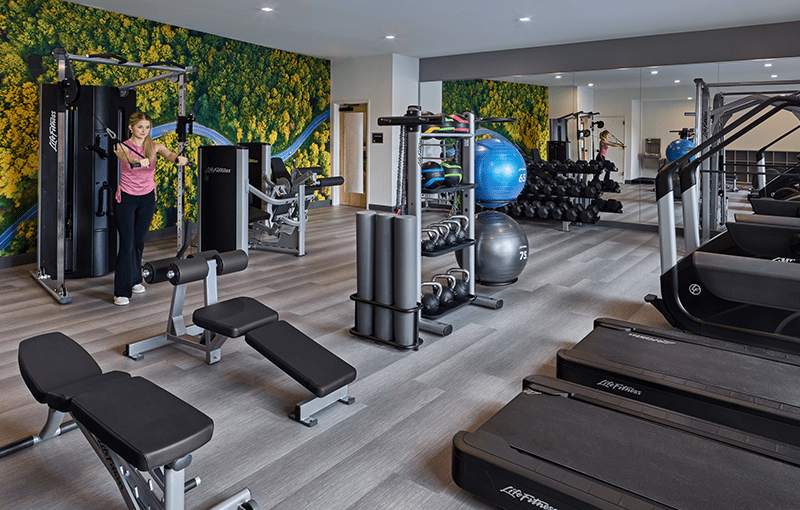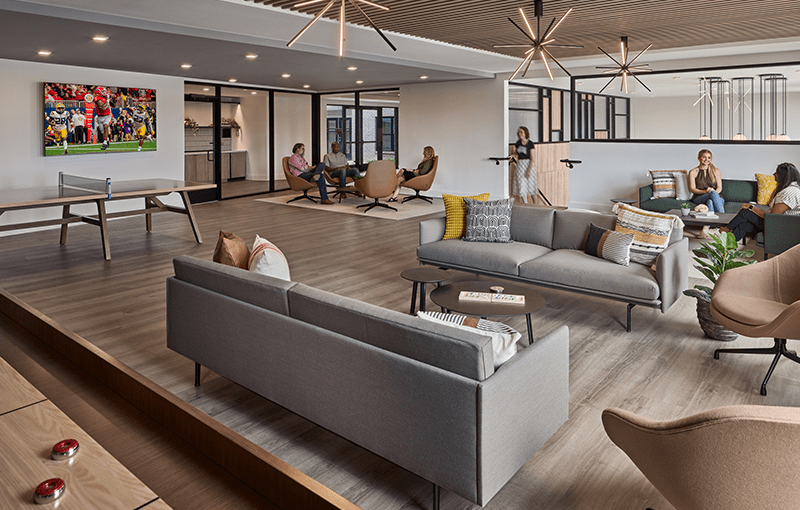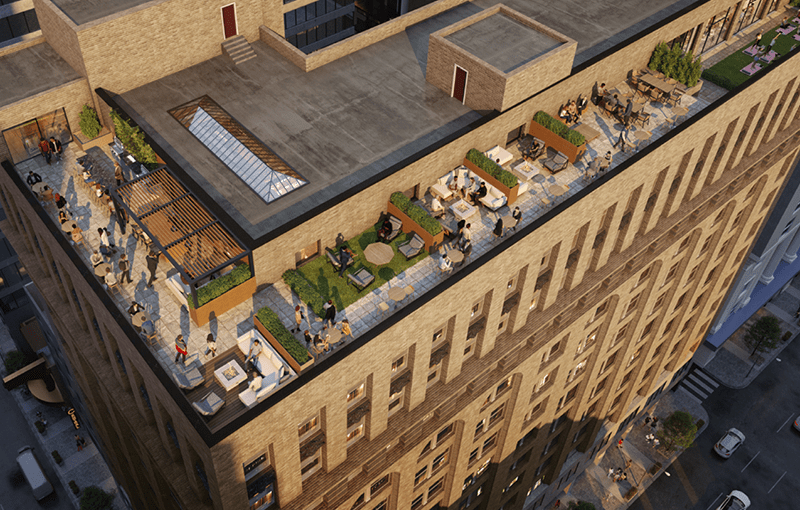There has been a noticeable trend in incorporating hospitality concepts into multifamily developments in recent years. This trend reflects a shift in consumer preferences towards a more experiential and service-oriented lifestyle, even within their living spaces. Incorporating hospitality concepts into multifamily interior design is becoming imperative to compete in a growing and competitive market. This fusion isn’t merely aesthetic; it’s a strategic approach to reshaping how people experience apartment living. Let’s explore why this trend is gaining momentum and what it means for developers and residents.
The demand for multifamily housing has increased significantly due to a lack of inventory and escalating home prices. According to RealPage, nearly 672,000 apartment units will be completed in 2024. This would represent the highest level in 50 years and require developers and real estate owners to differentiate and elevate their properties. There are several hospitality-driven focus points for developers and owners to consider:
Enhanced Resident Experience
Imagine entering your apartment complex and being greeted by a lobby resembling a chic boutique hotel. The ambiance, luxurious finishes, and comfortable furnishings are meticulously curated to evoke a sense of localism and community. Hospitality trends are influencing interior design elements to create spaces that are visually appealing, comfortable, and conducive to relaxation. This includes using high-quality materials, stylish furnishings, and thoughtful lighting design to evoke a sense of luxury and comfort. Multifamily developments are increasingly offering amenities commonly found in hotels or resorts, such as rooftop lounges, swimming pools, fitness centers, spas, and concierge services. These amenities enhance the living experience and create a sense of luxury and convenience for residents. Mixed-use developments may add bars, coffee shops, and other retail spaces to enhance the resident experience.
Appealing to Lifestyle Seekers to Gain Competitive Advantage
In a bustling real estate market, differentiation is critical. Today’s renters aren’t just looking for a place to live; they’re seeking a lifestyle. Millennials and young professionals, who comprise the largest demographic of multifamily renters, prioritize experiences and amenities when choosing their homes. Some multifamily properties are adopting a service-oriented approach akin to hotels. This approach may involve offering services such as housekeeping, dry cleaning, package delivery, pet spa care, and on-site maintenance to enhance convenience for residents. These features start to set multifamily developments apart, attracting discerning tenants and potentially commanding higher rental rates or property values. It’s a strategic move that attracts and retains residents seeking a lifestyle upgrade.
Urbanization Trends
As cities grow denser, so does the demand for multifamily housing that transcends mere functionality. Urban dwellers crave social interaction and leisure opportunities within their living spaces. Hospitality-inspired design answers this call by creating inviting communal areas and organizing community events that transform buildings into vibrant micro-communities. Developers are designing multifamily properties that focus on creating vibrant community spaces where residents can socialize, work, and relax. Properties can include communal kitchens, outdoor gathering areas with fire pits or BBQ grills, coworking spaces, and game rooms.
Longer Residency
Like hotels, some multifamily properties organize events and programming to foster community among residents. Events may include fitness classes, cooking workshops, movie nights, and social gatherings organized by property management. By crafting engaging and comfortable environments, multifamily developments with hospitality-like programming inspire residents to put down roots. Reduced turnover rates often translate to increased stability and long-term rental income for property owners and managers. It’s a win-win scenario that rewards both residents and stakeholders alike.
Evolution of Work-Life Balance
How we work is changing, with more people embracing remote or flexible work arrangements. Multifamily developments that offer amenities like coworking spaces, high-speed internet, and on-demand services cater to this shift, seamlessly blending work and leisure under one roof. Many multifamily properties are integrating technology solutions to enhance the resident experience, similar to what one might find in a hotel. Such technologies may include smart home features like keyless entry systems, automated temperature control, and remote access to amenities and services. Incorporating WiFi throughout the complex can allow tenants to work from their apartments or take a Zoom meeting in the lounge space if they’d like.
Incorporating hospitality concepts into multifamily residential properties reflects a desire to elevate the living experience and differentiate properties in a competitive market. By offering luxurious amenities, personalized services, and community-focused spaces, developers aim to attract and retain residents seeking a lifestyle that blends the comforts of home with the conveniences of a hotel.
Integrating hospitality concepts into multifamily interior design isn’t just a passing trend—it’s a response to shifting societal preferences and a growing population accustomed to the speed of delivery and enhancements that technology brings. It’s about enhancing living experiences, fostering community, and ensuring residential developments’ long-term success and desirability in our rapidly evolving urban landscapes. As this trend continues to grow, one thing is sure: the line between where we live and where we vacation is becoming increasingly blurred, resulting in a richer, more fulfilling residential experience for us all.






